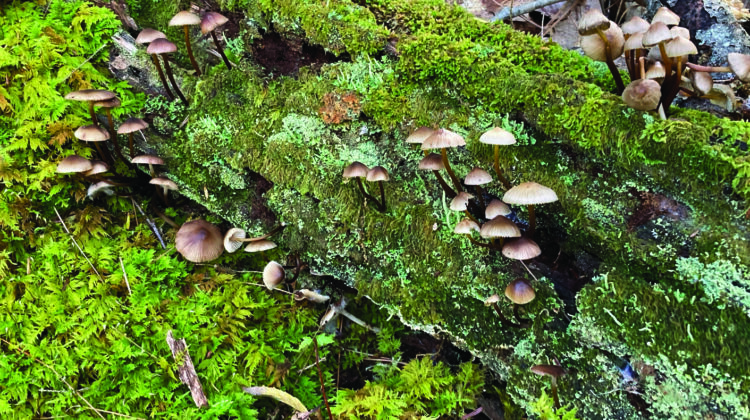As we begin our spring yard clean up, keep in mind it is not necessary or the best practice to be efficient with the task. When all of nature is being threatened, natural decomposition can be welcomed everywhere as the importance of dead trees is not restricted to highly wooded areas. Both fallen (“logs”) and standing (“snags”) dead trees provide important wildlife resources — food, food storage, shelter, lookouts, singing and display perches, hiding, and nesting sites.
A dead tree continues supporting a healthy ecosystem for decades. Upon death of a tree, water, microbes, mosses, lichen, and fungi begin the process of decomposing it. Wood is turned into a rich substrate that nourishes seedlings; as erosion continues, nooks and crannies develop and anchor the growing plants. Raised above the ground, seedlings are protected from more intense ground competition from other plants.
During a walk in the woods, you may encounter the ghosts of downed trees known as nurse logs which provide nourishing and protective germination sites for the next generation of trees and other plants. Nurse logs not only nurture seedlings, but provide habitat and sustenance from microbes to mammals: insects, birds, turtles, mice, chipmunks, squirrels, deer, snakes, frogs, toads, deer, skunks, salamanders, fox, coyotes — to name a few!
Standing dead trees play a unique role in the environment that has no comparison. A multitude of birds find homes in hollowed out cavities along with other small mammals that use this tree for dens, store food and escape predators. Snags are chosen by birds of prey to hunt for rodents and keep them out of our houses. A certified arborist can determine safety and will recognize the role these trees play in the natural world.
In an area left to naturalize by water, a familiar sight are turtles basking on a dead tree that has fallen into a pond. The activity is not an indulgence but is necessary to maintain the turtle’s body temperature, produce vitamin D and control parasites and other microbes. The logs help turtles maintain their health, and in turn the turtles help maintain healthy water bodies by consuming algae and other organisms.
We can borrow from nature’s successful strategies and leave snags and logs where they contribute the most, quite possibly on our own property. The Tree Committee urges you to recognize one of wildlife’s greatest treasures can exist in our own backyards as dead wood. Both snags and logs can be incorporated into many attractive landscape and garden designs. Even one small dead wood element — for example using a stump or log as a planter — can provide significant ecological benefit and an interesting aesthetic detail.

